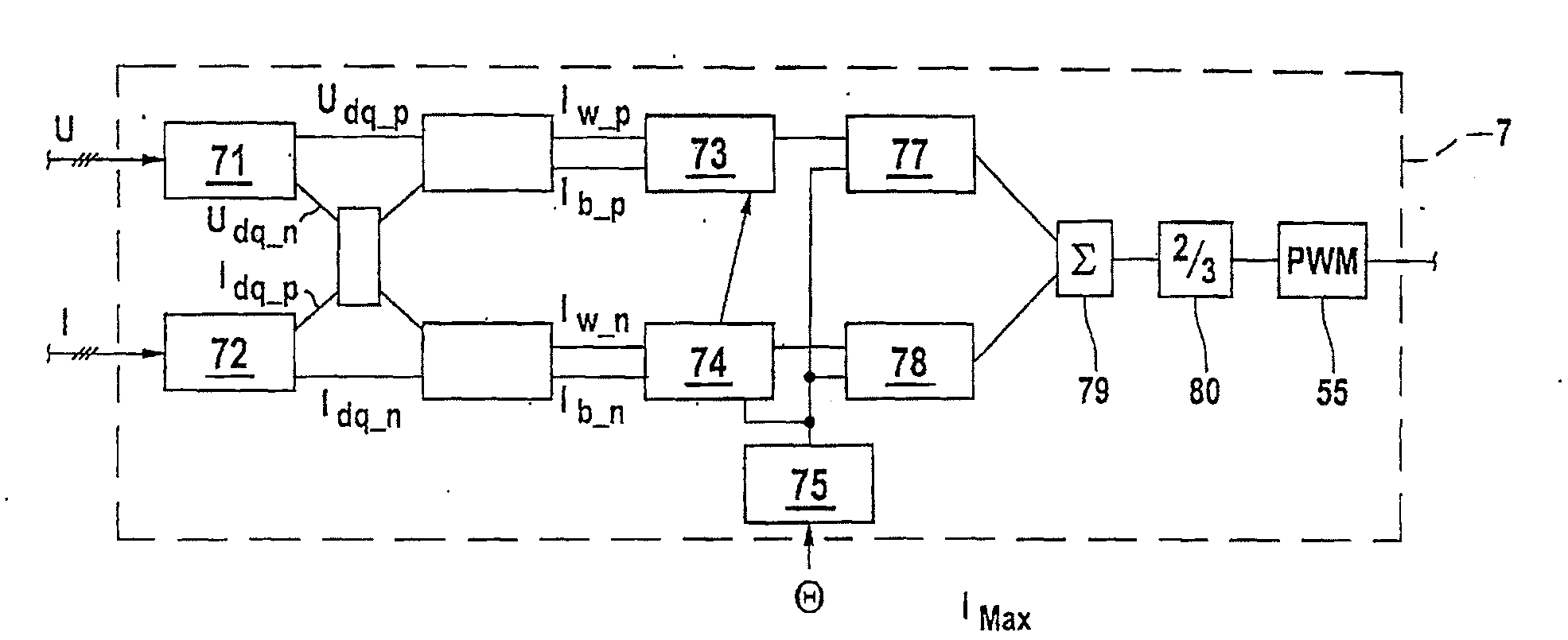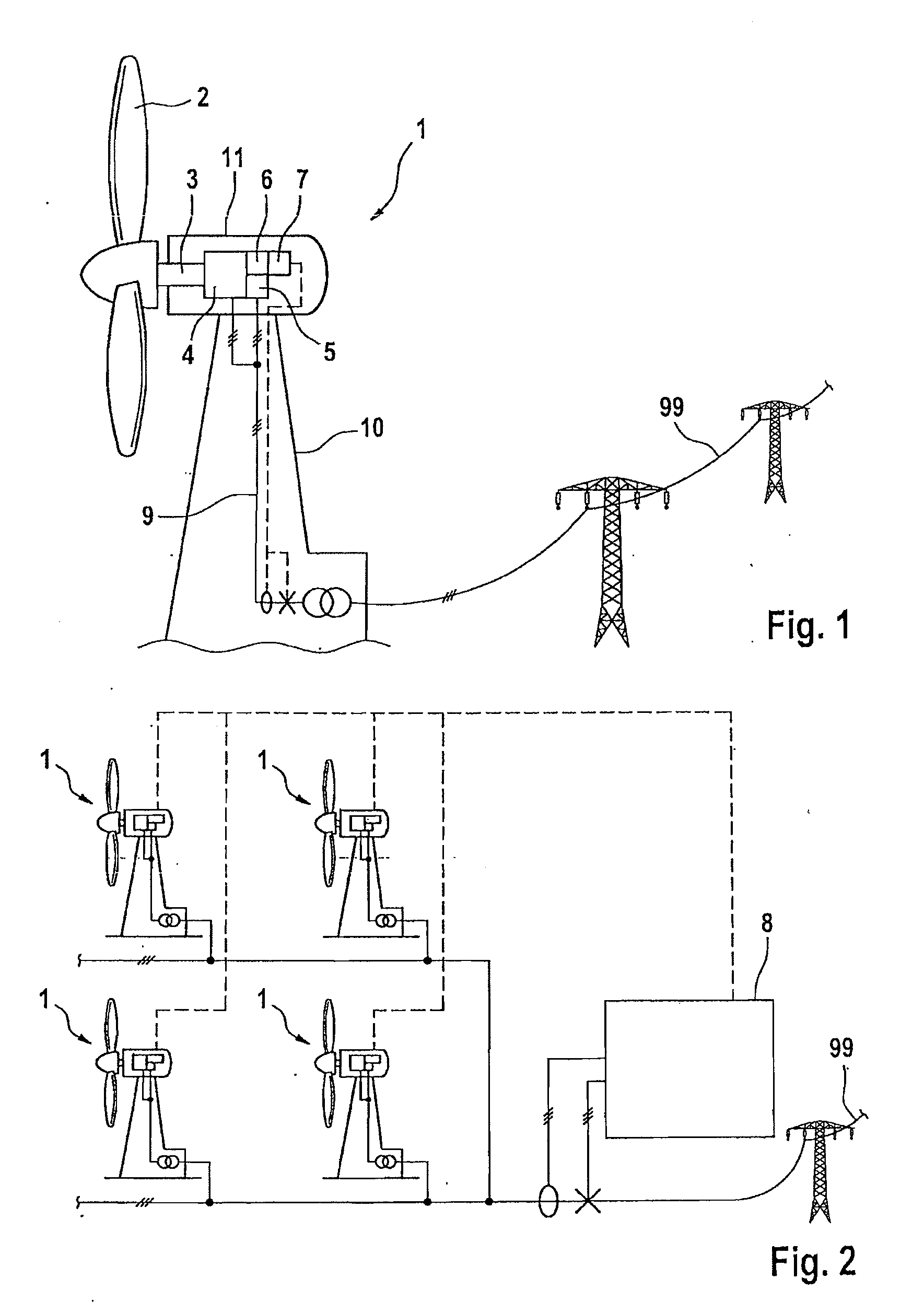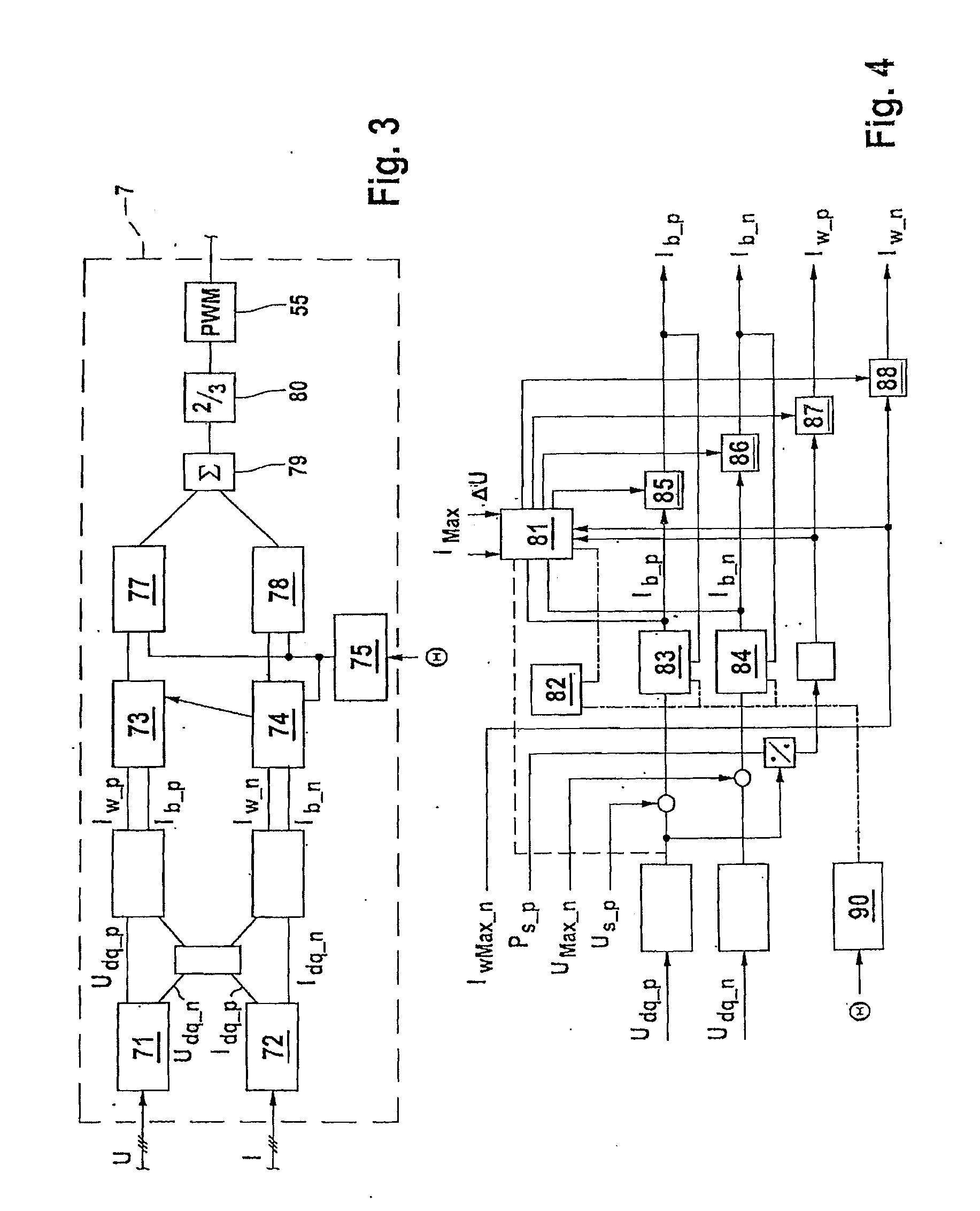Wind energy installation with negative sequence system regulation and operating method
- Summary
- Abstract
- Description
- Claims
- Application Information
AI Technical Summary
Benefits of technology
Problems solved by technology
Method used
Image
Examples
Embodiment Construction
[0024]A wind energy installation 1 in accordance with one exemplary embodiment of the invention is illustrated in FIG. 1. It comprises a machine house 11 arranged rotatively on a tower 10, a rotor 2 being arranged rotatively at one end of said machine house. Said rotor drives a generator 4 via a rotor shaft 3, said generator being embodied as a doubly fed asynchronous generator in the exemplary embodiment illustrated. The generator is connected by its stator to connecting lines 9 connected to a supply grid 99 via an optional transformer. A converter 5 is furthermore provided, via which the rotor of the generator is connected to the connecting lines 9.
[0025]A controller 6 is provided, which is designed for controlling the operation of the wind energy installation. It is connected to the components of the wind energy installation via signal lines (not specifically illustrated). The controller 6 has a communication interface, with the result that remote control via telephone or data li...
PUM
 Login to View More
Login to View More Abstract
Description
Claims
Application Information
 Login to View More
Login to View More - R&D
- Intellectual Property
- Life Sciences
- Materials
- Tech Scout
- Unparalleled Data Quality
- Higher Quality Content
- 60% Fewer Hallucinations
Browse by: Latest US Patents, China's latest patents, Technical Efficacy Thesaurus, Application Domain, Technology Topic, Popular Technical Reports.
© 2025 PatSnap. All rights reserved.Legal|Privacy policy|Modern Slavery Act Transparency Statement|Sitemap|About US| Contact US: help@patsnap.com



